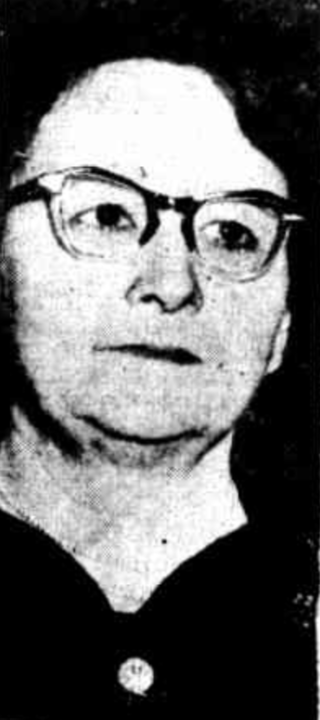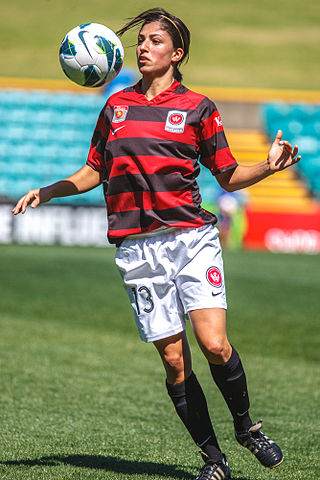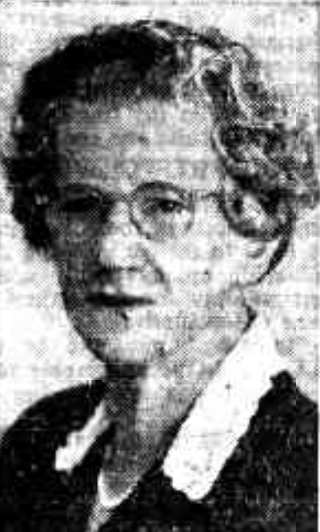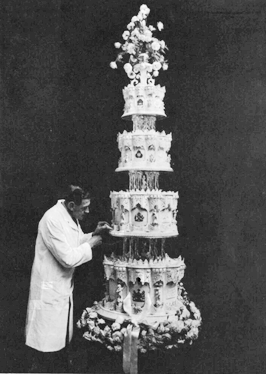
A lamington is an Australian cake made from squares of butter cake or sponge cake coated in an outer layer of chocolate sauce and rolled in desiccated coconut. The thin mixture is absorbed into the outside of the sponge cake and left to set, giving the cake a distinctive texture. A common variation has a layer of cream or strawberry jam between two lamington halves.

The New South Wales Rugby League (NSWRL) is the governing body of rugby league in New South Wales and the Australian Capital Territory and is a member of the Australian Rugby League Commission. It was formed in Sydney on 8 August 1907 and was known as the New South Wales Rugby Football League (NSWRFL) until 1984. From 1908 to 1994, the NSWRL ran Sydney's, then New South Wales', and eventually Australia's top-level rugby league club competition. The organisation is responsible for administering the New South Wales rugby league team.

The Bank of New South Wales (BNSW), also known commonly as The Wales, was the first bank in Australia, being established in Sydney in 1817 and situated on Broadway. During the 19th century, the bank opened branches throughout Australia and New Zealand, expanding into Oceania in the 20th century. It merged with many other financial institutions, finally merging with the Commercial Bank of Australia in 1982 and being renamed to the Westpac Banking Corporation on 4 May that year under the Bank of New South Wales Act 1982.

Emma Miller was an English-born Australian pioneer trade union organiser, suffragist, and key figure in organisations which led to the founding of the Australian Labor Party in Brisbane, Queensland, Australia.
Lacrosse in Australia is a minor sport, with a long and proud history dating back to 1876, with a small but dedicated community of participants and volunteers. The established centres for lacrosse are in the greater metropolitan areas of Melbourne, Adelaide, and Perth. In these cities there are organised weekend field lacrosse competitions for men and women at senior and junior levels, played over the winter months. In the off-season, there are informal box lacrosse and sofcrosse competitions, though the majority of players in Australia are mostly of the field lacrosse type. Some lacrosse is also played in Sydney, South East Queensland, Canberra, Ballarat and Bendigo, it is very much at the developmental level.

The Australian Federation of Islamic Councils (AFIC), founded in 1964 as Australian Federation of Islamic Societies (AFIS) and also known as Muslims Australia, is a not-for-profit umbrella organisation to represent Sunni Muslims across Australia.
Toomelah is an Aboriginal Australian community in the far north of inland New South Wales, Australia.

Dame Alice Miriam Berry was an Australian activist dedicated to finding ways to improve the lives of women and children in rural areas.

Catherine Cannuli is an Australian soccer coach and former player who is coach of the Western Sydney Wanderers in the W-League. She played national league football in the Women's National Soccer League for the NSW Sapphires and the W-League for Sydney FC, Brisbane Roar and Western Sydney Wanderers. She also played for Inter Lions in the NSW Women's Premier League. She also played four times for Australia.

Ruth Beatrice Fairfax was a founding member of the Australian Country Women's Association and the first President of the Queensland Country Women's Association. The federal electorate of Fairfax is named in her honour.

Ada Beveridge MBE, néeBeardmore was an Australian Country Women's Association leader.

The New South Wales Ice Hockey Association, currently trading as Ice Hockey NSW is the governing body of ice hockey in New South Wales, Australia. The New South Wales Ice Hockey Association is a branch of Ice Hockey Australia.

Helena Catherine Marfell was an Australian community worker who was the first president of the Country Women's Association of Australia (1945–1947).

The Contemporary Art Society is an Australian organisation formed in Victoria 1938 to promote non-representative forms of art. Separate, autonomous branches were formed in each state of the Commonwealth by 1966, although not all of them still exist today.

The Queensland Country Women's Association (QCWA) is the Queensland chapter of the Country Women's Association in Australia. The association seeks to serve the interests of women and children in rural areas in Australia through a network of local branches. Established in 1922, local branches provide friendship and mutual support to their members while contributing to the betterment of life in their local communities. Over time, many branches have evolved to include support for wider issues such as domestic violence campaigns and fund-raising for international initiatives such as orphanages.
Women's rugby league is a popular women's sport in Australia. The sport has a high level of participation in the country both recreational and professional. Australian Rugby League Commission (ARLC) is the national governing body of the sport in Australia, organising the Australian Women's Rugby League, the Australian women's national team, and the nine state governing bodies of the game, among other duties. Women's participation of modern rugby league has been recorded since the early 1920s. It has since become one of Australia's most popular women's team sports.

CWA Rest House is a heritage-listed Country Women's Association rest house at Yapunyah Street, Barellan, Narrandera Shire, New South Wales, Australia. It was designed by George William Welch and built in 1924. It is also known as Country Women's Association hall and Country Women's Association meeting rooms. It was added to the New South Wales State Heritage Register on 18 November 2011.

Grace Emily Munro was an Australian World War One volunteer, charity worker, and founder of the Country Women's Association.
Bertha Chatto St. George Smith, also known as Bertha Mac Smith, was an Australian author and philanthropist. She was appointed an Officer of the British Empire in 1964, in recognition of her work as national president of the Country Women's Association of Australia.

Princess Elizabeth and Philip Mountbatten were offered many cakes from well-wishers around the world for their wedding on 20 November 1947. Of these they accepted 12. The principal, ‘official’ cake, served at the wedding breakfast, was baked by the Scottish biscuit maker, McVitie and Price. The other 11 cakes – from prominent confectionary firms and smaller, family-run bakers – were displayed on “specially strengthened tables” in Buckingham Palace’s 20-metre long Blue Drawing Room, and distributed to charitable organisations after the wedding. All the cakes were delivered to Buckingham Palace the day before the wedding ceremony, with Princess Elizabeth greeting each arrival personally.



























